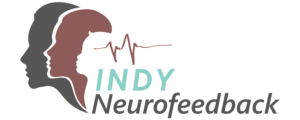Migraines Explored
Contrary to popular belief, migraines are more complicated that just a bad headache.
 Not only are they exceedingly common, affecting nearly 40 million people in the United States, they can last up to 72 hours. Migraines are likely caused by a combination of environmental factors and genetic vulnerability, since two thirds of those suffering from migraines have family members who also have them.
Not only are they exceedingly common, affecting nearly 40 million people in the United States, they can last up to 72 hours. Migraines are likely caused by a combination of environmental factors and genetic vulnerability, since two thirds of those suffering from migraines have family members who also have them.
Headaches are just one symptom of migraines, which are complex and include a wide spectrum of symptoms – some of which can be very debilitating — including:
- Sensitivity to light and/or sound
- Nausea
- Seeing spots or flashing lights
- Pain in the temple or behind ears
- Temporary vision loss.
According to neurologists, brain imaging performed during an active migraine attack shows:
- Physical changes to the brain’s surface
- Brain inflammation
- Dilated blood vessels
- Dramatic alterations in blood flow.
Since migraine episodes can differ widely, getting an accurate diagnosis is very important for your brain health as well as your overall wellbeing. After diagnosis, finding treatments that work for individuals – all with varying symptoms and severity — can be very difficult. Common medical migraine treatments include prescription drugs, keeping personal routines as regular as possible, reducing sugar intake, reducing alcohol consumption, and smoking cessation.
“Considering the wide variety in symptoms and severity,” says Leanne O’Neil, owner of INDY Neurofeedback, “it is not surprising that traditional western medicine often includes prescription medicines and doesn’t always work well for those of us experiencing migraines. Clients often come see us to find drug-free solutions for migraines.”
“Neurofeedback and biofeedback are effective ways to gain awareness and control over some of your body’s reactions to stress. These modalities can measure a client’s changes in muscle and brain activity, temperature, heart rate, and even sweat gland activity. It shows the client each of these physical changes in real time,” explains O’Neil. “Hundreds of studies have shown that — with proper training — you can learn to regulate brain and body processes on your own while you are receiving immediate neurofeedback information.”
Not only are these non-medical techniques fascinating, but they also work. “I have had many clients from both The Cleveland Clinic and Michigan Head and Neck Institutes, who were resigned to life-long headaches and medication, but after intensive neurofeedback work, are now free from prescribed medications and migraines,“ says O’Neill.
If you suffer from migraines, talk to us about setting up an exploratory appointment to find out more about how INDY Neurofeedback may help.
